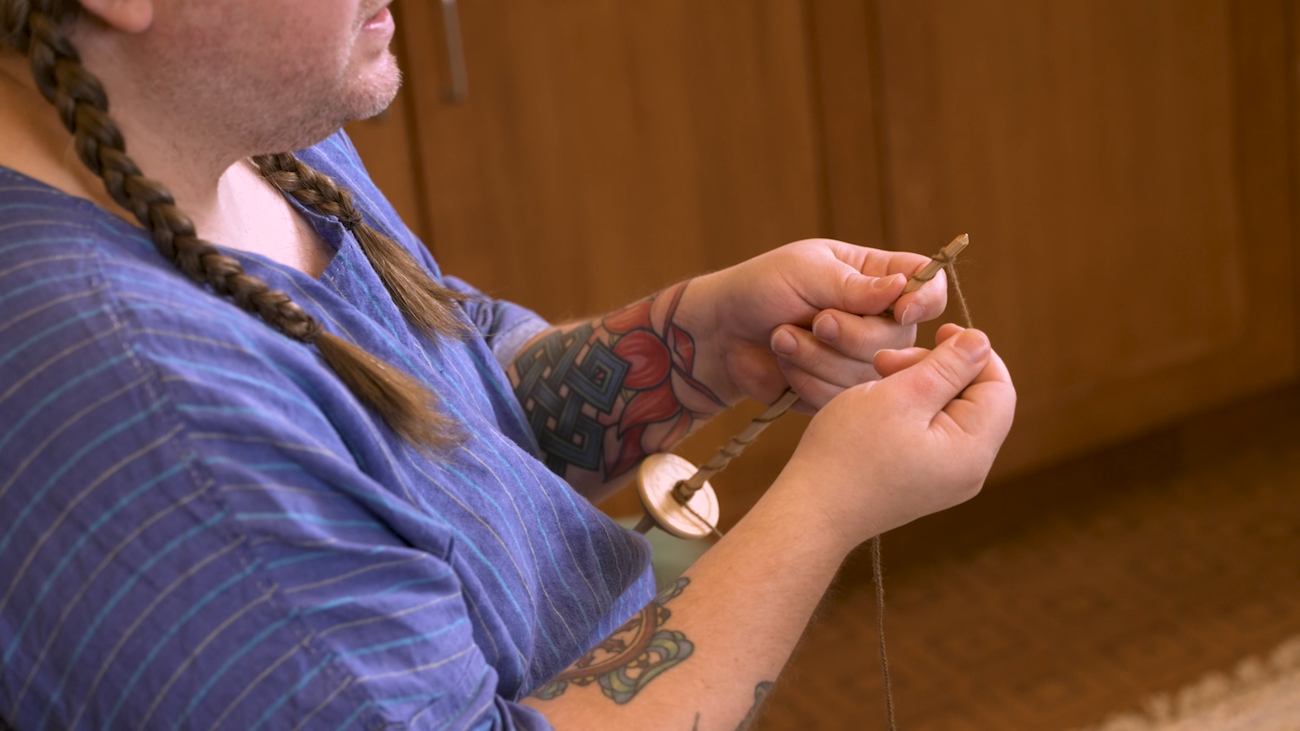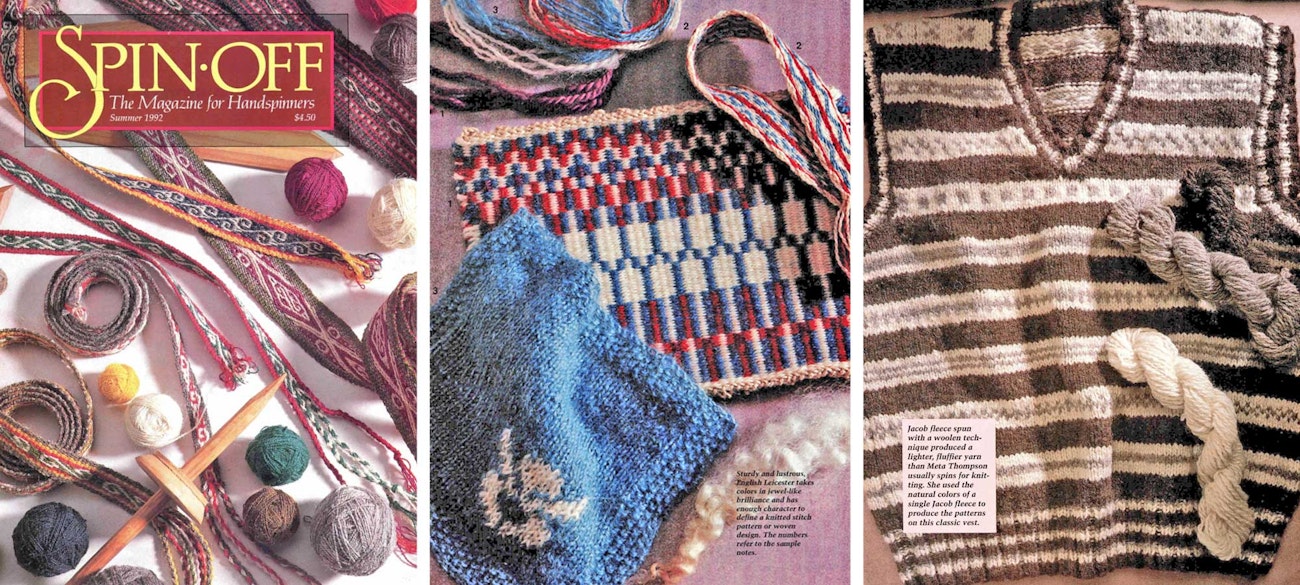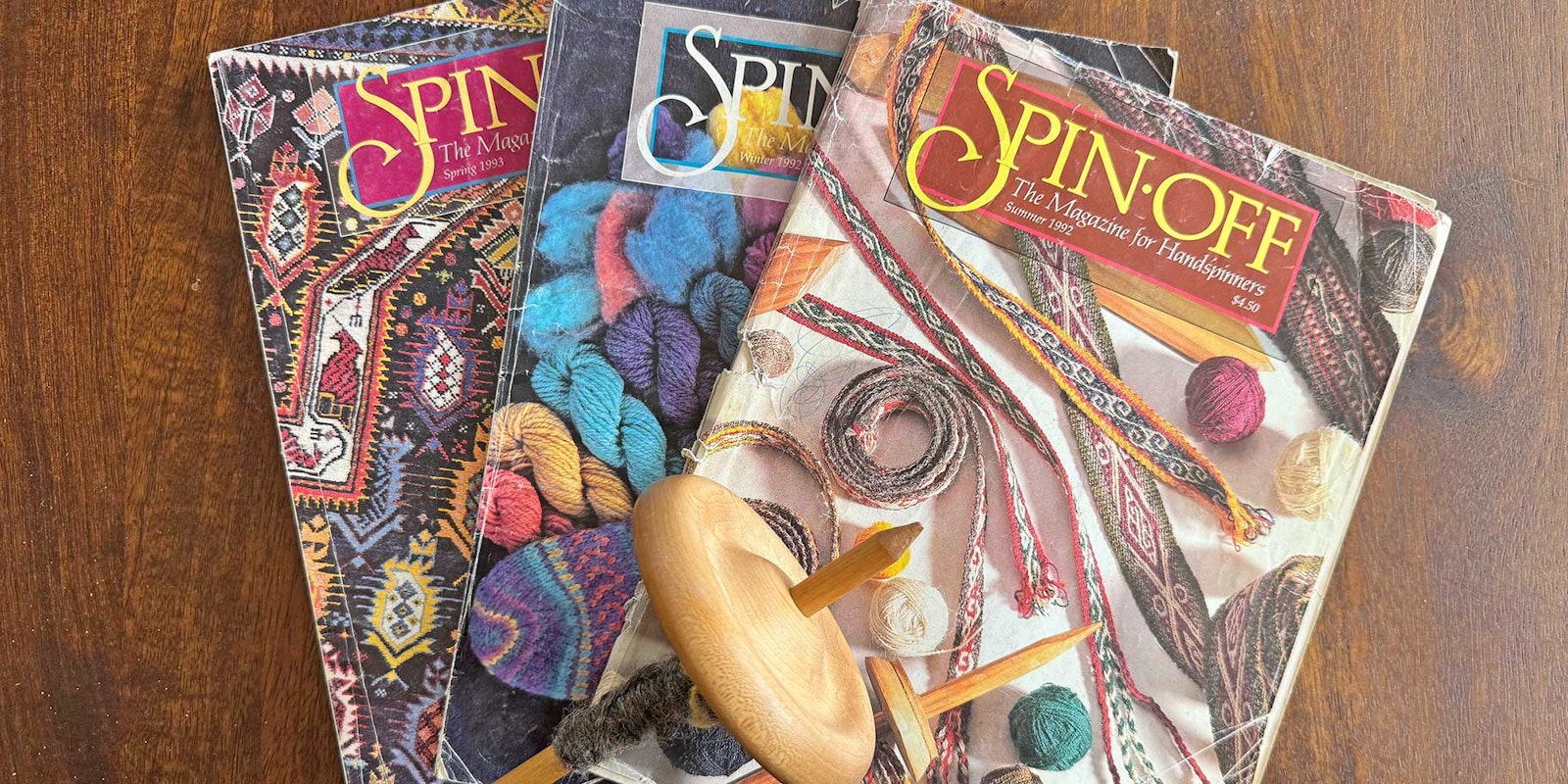Recently I was looking at the shelves of textile books and magazines in my studio and saw the first issue of Spin Off I ever owned, Summer 1992. I had been spinning for over a year when I first came across that magazine and I was desperate for more information on spinning.
I had learned basic spinning from a kit my father purchased for me at a local historical site. It contained a single page of instructions, a large bottom-whorl spindle, and a wad of wool quilt batting. I tried to learn to spin using this spindle and the instructions, and managed to at least make some yarn, but I had more questions than answers and no one to learn from. We are a book-loving family and so the solution at the time was to get another book. My parents purchased Hands On Spinning by Lee Raven, which walked me through step-by-step how to spin and finish yarn using several types of fiber. Now I had learned to spin but I still wanted more information, more inspiration, more techniques, more history.
 Devin demonstrates how to add a leader to a bottom-whorl spindle, similar to the one they learned on, in the video course Spindle Spinning Essentials.
Devin demonstrates how to add a leader to a bottom-whorl spindle, similar to the one they learned on, in the video course Spindle Spinning Essentials.
From the moment I picked up my first copy of Spin Off, I got everything I had been in search of. I was at a craft store to purchase a pound of raw wool to spin when I saw a rack of Spin Off issues. My father said I could pick out one issue to buy, and I looked at the covers trying to decide which one to get. Finally, I decided to get the Summer 1992 issue because I was enthralled by the colors of the woven bands on the cover and the beautiful balls of tightly plied yarn. I was disappointed that I could only pick one, but I didn’t realize just how much I could learn from that issue. That one issue I held in my hands taught me about English Leicester wool (Leicester Longwool) and how best to use it; had a gallery of projects that gave me inspiration for what I could make using handspun yarn (in particular, a knitted vest from Jacob fleece, spun by color, which I still plan to re-create at some point); taught me how to raise and process flax for spinning and how to spin flax of various preparations; and described how to spin high-twist yarn on spindles for Andean-style weaving.
 A few of the stand-out pages from the 1992 issue: “Shiny and Strong English Leicester” by Jane Fournier (center), and “Man’s Vest from Jacob Fleece” by Meta Thompson (right). Photos by Joe Coca
A few of the stand-out pages from the 1992 issue: “Shiny and Strong English Leicester” by Jane Fournier (center), and “Man’s Vest from Jacob Fleece” by Meta Thompson (right). Photos by Joe Coca
I re-read that issue over and over again, practically memorizing it. That Christmas, I received the best present—a subscription to Spin Off plus the Winter issue, the “socks” issue. It would be another 25 years before I took my first spinning class, but my quarterly issues of Spin Off have taught me so much over the years, and have inspired me to try so many new things, like cotton spinning, natural dyeing, and doing needlepoint with my handspun. With the exception of five years during college, I have been a subscriber to Spin Off (since 1992!) and I treasure my old issues, often grabbing one to page through, looking for inspiration or to learn something new.
The proudest day in my spinning career was the day my first article was published in Spin Off, and though I have since had several articles accepted for publication, I still get a tremendous thrill each and every time I see my work in the magazine that was to me a spinning teacher, a library of inspiration, a directory of fiber and tool sources, and a sheer joy to read. I truly am a Spin Off–made spinner.
Remember that if you are an active subscriber to Spin Off magazine, you have unlimited access to previous issues, including Summer 1992. See our help center for the step-by-step process on how to access them.
Devin Helmen has been immersed in fiber since learning to spin at age eight. They spin, knit, and weave in beautiful Minnesota. Devin enjoys writing and teaching about fiber arts and has a passion for spindles and everyday textiles. They blog, intermittently, at afewgreenfigs.blogspot.com.

